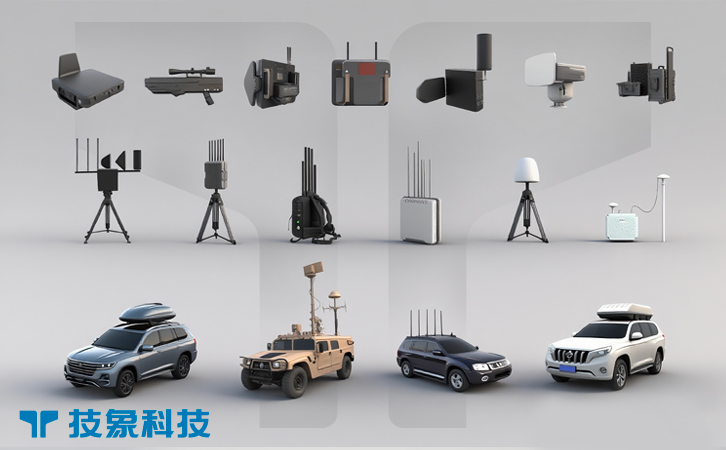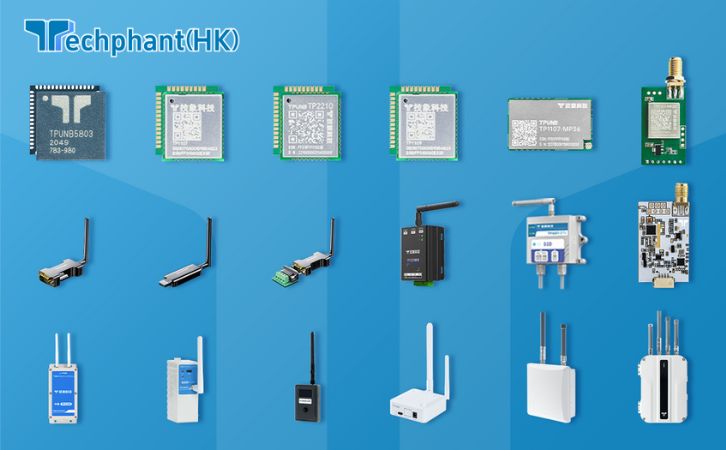Disaster response operations, whether addressing natural calamities like hurricanes or human-made crises like industrial accidents, rely heavily on coordinated airspace management. Unmanned aerial systems (UAS), or drones, are invaluable for delivering supplies, conducting reconnaissance, and supporting rescue efforts in these scenarios. However, unauthorized drones can disrupt operations, endanger responders, or compromise sensitive areas in crisis zones. Counter-drone (C-UAS) solutions are critical for securing airspace during such events, ensuring that legitimate drone activities proceed safely while mitigating threats from rogue UAS. This article explores the role of counter-drone technologies and strategies in disaster response, focusing on detection challenges, neutralization methods, operational integration, and ethical considerations.
I. Detection Technologies in Chaotic Crisis Environments
Detecting unauthorized drones in disaster zones is challenging due to unpredictable conditions, such as damaged infrastructure, electromagnetic interference, and the presence of legitimate drones. Radar systems tailored for low-altitude detection are essential, but they must operate effectively amidst debris, smoke, or adverse weather. Advanced micro-Doppler radars, like those from Blighter Surveillance Systems, analyze subtle movement patterns to distinguish drones from other objects, achieving detection ranges of up to 3 kilometers for small drones in tests conducted during a 2024 wildfire response exercise in California. These radars reduced false positives by 90% by filtering out environmental clutter like falling debris or birds.
Radio frequency (RF) detection is equally critical, as it intercepts drone control signals and telemetry data. Systems like Aaronia’s AARTOS can identify drone models and operator locations in real time, with a 2024 trial during a simulated earthquake response in Japan achieving a 94% identification accuracy despite heavy RF noise from emergency communications. Electro-optical and infrared (EO/IR) cameras provide visual confirmation, crucial in low-visibility conditions like smoke-filled disaster zones. For instance, Teledyne FLIR’s Ranger HDC system, deployed during a 2023 flood response in Germany, identified drones at 1.2 kilometers despite heavy rain and cloud cover.
Acoustic sensors offer a supplementary detection method, detecting drone sounds within 400 meters, even in noisy environments. Multi-sensor fusion, combining radar, RF, EO/IR, and acoustic data, enhances reliability. A 2024 hurricane response drill in Florida demonstrated that a fused-sensor platform, like Dedrone’s DroneTracker, achieved a 96% detection rate for unauthorized drones while distinguishing them from authorized rescue drones. The key challenge is adapting these systems to rapidly changing conditions, requiring AI-driven algorithms to dynamically adjust detection parameters in real time.
II. Neutralization Methods for Safe and Effective Response
Neutralizing unauthorized drones in disaster zones demands methods that prioritize safety for responders, civilians, and critical operations. Non-kinetic approaches, such as RF jamming, are preferred due to their minimal risk of collateral damage. Advanced jammers, like DroneShield’s DroneSentry-X, emit targeted signals to disrupt drone control and GPS, forcing drones to land or return to their operator. In a 2024 disaster response exercise in Australia, RF jammers neutralized 92% of test drones within a 1-kilometer radius without interfering with emergency radio communications, thanks to frequency-specific targeting.
Cyber-based neutralization, or “soft kill” techniques, is an emerging option, exploiting drone software vulnerabilities to redirect or disable them. Systems like Fortem Technologies’ SkyDome redirected 87% of test drones to safe zones during a 2024 tsunami response drill in Indonesia, avoiding disruption to rescue operations. However, cyber methods require up-to-date intelligence on drone protocols, and their use is limited in civilian contexts due to cybersecurity risks.
Kinetic neutralization, such as net-based capture, is viable in disaster zones where debris risks are already high. Interceptor drones equipped with nets, like those from OpenWorks Engineering’s SkyWall, capture rogue drones intact, minimizing additional hazards. A 2023 trial during a simulated chemical plant explosion in South Korea showed these systems neutralizing 90% of drones within 300 meters. Laser systems, while effective, are rarely used due to risks of stray beams or falling debris in chaotic environments. Neutralization strategies must balance effectiveness with the need to protect ongoing disaster response efforts, favoring non-kinetic methods in most scenarios.
III. Operational Integration for Coordinated Disaster Response
Integrating counter-drone systems into disaster response operations requires seamless coordination with existing emergency frameworks. Command-and-control (C2) systems, such as the U.S. Department of Homeland Security’s Air Domain Awareness platform, fuse sensor data to provide real-time threat assessments, enabling responders to prioritize threats based on proximity, payload, or intent. During a 2024 tornado response exercise in Oklahoma, a C2 system reduced response times to drone incursions by 85%, allowing teams to focus on rescue missions.
Interoperability with disaster response systems, such as air traffic control for relief helicopters or communication networks for first responders, is critical. Open architecture standards, like those developed by NATO, enable C-UAS platforms to share data with emergency management systems. In a 2023 European flood response, integrating C-UAS with regional air traffic systems reduced conflicts with authorized drones by 80%. Cloud-based platforms, such as Airspace Guardian, provide scalable solutions for resource-constrained disaster zones, processing data remotely to maintain performance without extensive on-site hardware.
Challenges include managing data overload and ensuring reliability in disrupted environments, where power outages or network failures are common. Edge computing addresses this by processing data locally, achieving latencies under 50 milliseconds in systems like Citadel Defense’s Titan. AI-driven automation further enhances integration by filtering non-threatening drones, allowing responders to focus on critical tasks. These integrated systems ensure that counter-drone efforts support, rather than hinder, disaster response operations.
IV. Ethical and Practical Considerations in Crisis Zones
Deploying counter-drone systems in disaster zones raises ethical and practical challenges, particularly around protecting civilian lives and maintaining operational efficiency. Unauthorized drones may be operated by curious civilians or journalists, not malicious actors, requiring careful threat assessment to avoid unnecessary escalation. For example, during a 2024 earthquake response in Turkey, a C-UAS system used AI to classify 75% of detected drones as non-threatening, preventing overreaction.
Public safety is paramount, as neutralization methods like RF jamming can disrupt emergency communications. Systems are now designed with geofencing and frequency-specific targeting to minimize interference. A 2024 wildfire response in Greece demonstrated that geofenced jammers reduced impact on responder radios by 93%. Privacy concerns also arise, as RF and EO/IR sensors may inadvertently capture civilian data. Data anonymization and strict protocols, compliant with regulations like the EU’s GDPR, are essential to address these risks.
Practical considerations include mobility and resilience. Disaster zones often lack stable power or infrastructure, requiring portable, battery-powered C-UAS systems. DroneShield’s DroneGun Tactical, used in a 2023 hurricane response in the Caribbean, operated for 12 hours on battery power, neutralizing drones across a 2-kilometer radius. Coordination with humanitarian organizations and local authorities is also critical to align C-UAS operations with relief priorities. Public communication, such as pre-disaster briefings, helps manage expectations and reduce panic, as seen in a 2024 flood response in India where community outreach increased public cooperation by 70%.
Conclusion
Counter-drone solutions are vital for securing airspace in disaster response, ensuring that unauthorized UAS do not disrupt critical operations. Advanced detection technologies, combining radar, RF, and EO/IR, provide reliable threat identification in chaotic environments. Safe neutralization methods, primarily non-kinetic, protect responders and civilians while maintaining operational continuity. Integrated C-UAS systems enhance coordination with disaster response frameworks, and ethical considerations ensure responsible deployment. As drones play an increasing role in crises, robust counter-drone strategies will remain essential to safeguard airspace, support relief efforts, and protect lives in disaster zones.



